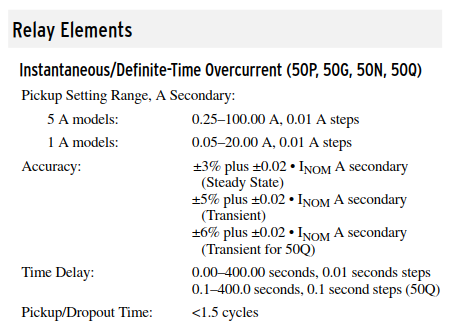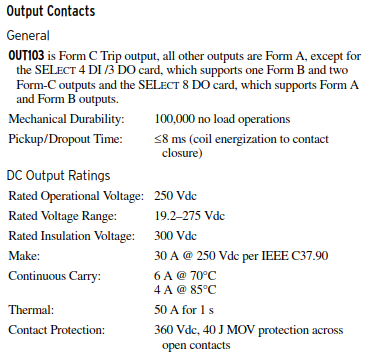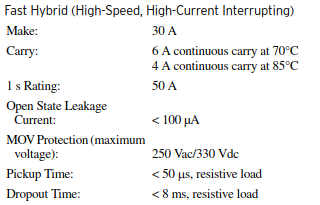Ali-rashid
Electrical
Hi everyone,
I'm working as the technical director in a power equipment-supplying company. We work with different distribution protection relays. Some of these relays are FANOX relays which provide 50:instantaneous over-current function. The minimum operating time of 50p function in these relays is 0.02 seconds (Fig 1).

fig 1
The relay uses RMS measurements and we investigated the reason behind this minimum value of 0.02s (while we need a relay with zero operating time) and some engineers believe that the minimum operating time that can theoretically be implemented in overcurrent relays is 0.02, reasoning that every relay needs at least a cycle of the current waveform (the frequency is 50Hz, 1 cycle = 1/50= 0.02s) to be able to detect a fault.
This is while, in similar overcurrent relays of other brands like ABB and Arcteq( to be specific, arcteq mk220), the operating time minimum limit is 0. Fig 2 shows the minimum operating time indicated in a red circle from Arcteq mk2200 relay user manual.

fig2
I want to know which one is true and what value can the minimum operating time of a relay be set to.
Thanks in advance
I'm working as the technical director in a power equipment-supplying company. We work with different distribution protection relays. Some of these relays are FANOX relays which provide 50:instantaneous over-current function. The minimum operating time of 50p function in these relays is 0.02 seconds (Fig 1).

fig 1
The relay uses RMS measurements and we investigated the reason behind this minimum value of 0.02s (while we need a relay with zero operating time) and some engineers believe that the minimum operating time that can theoretically be implemented in overcurrent relays is 0.02, reasoning that every relay needs at least a cycle of the current waveform (the frequency is 50Hz, 1 cycle = 1/50= 0.02s) to be able to detect a fault.
This is while, in similar overcurrent relays of other brands like ABB and Arcteq( to be specific, arcteq mk220), the operating time minimum limit is 0. Fig 2 shows the minimum operating time indicated in a red circle from Arcteq mk2200 relay user manual.

fig2
I want to know which one is true and what value can the minimum operating time of a relay be set to.
Thanks in advance



